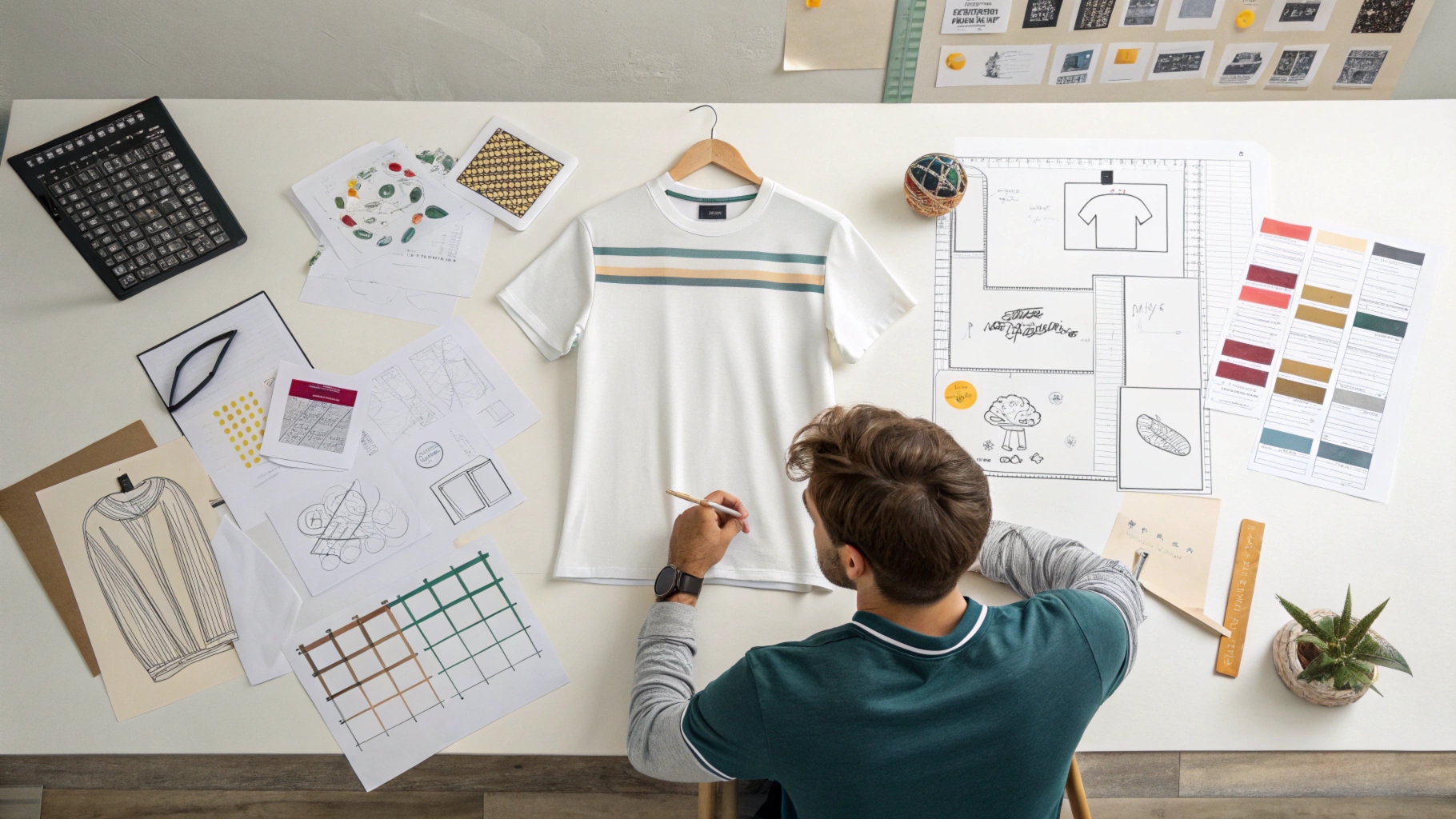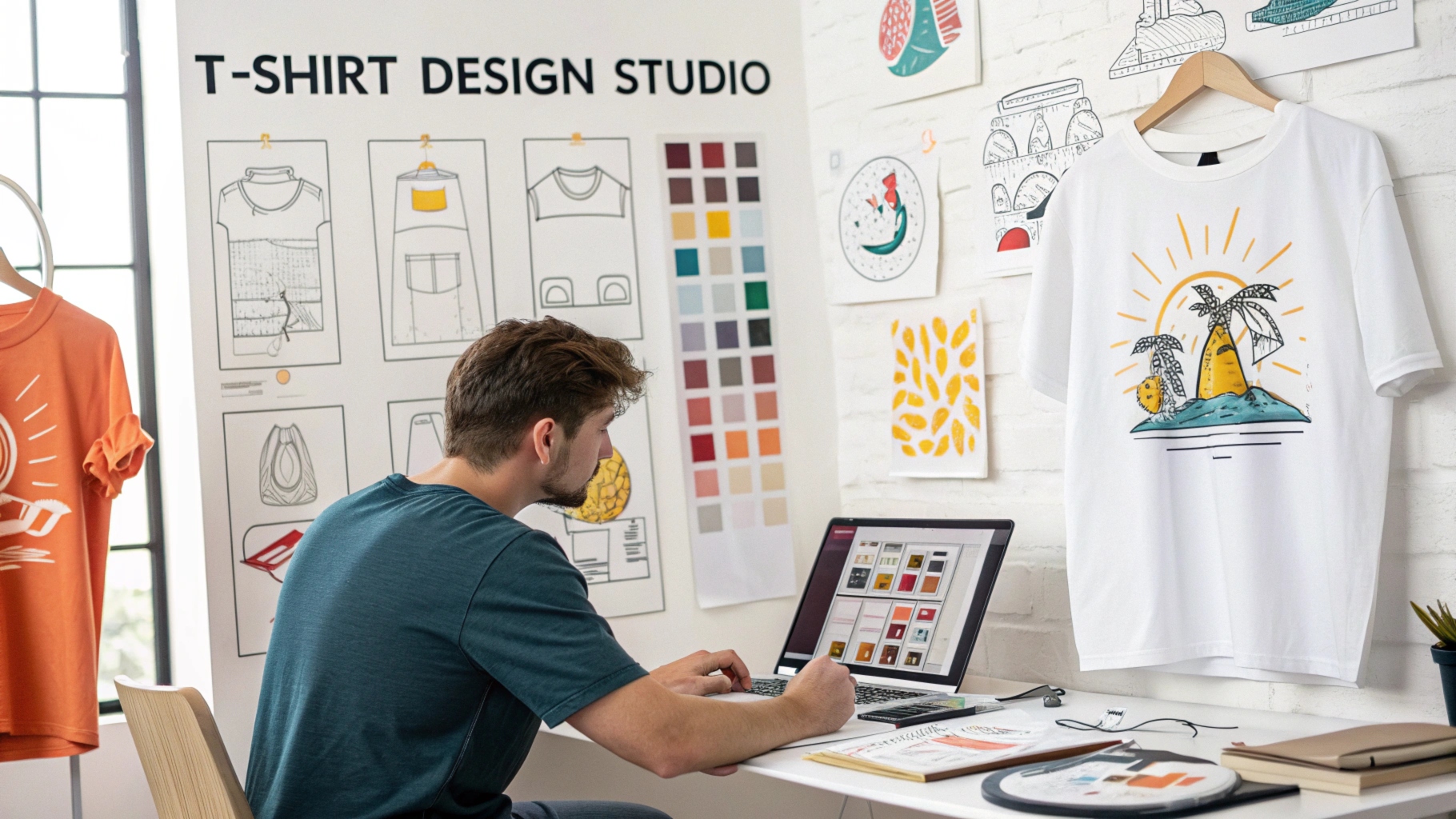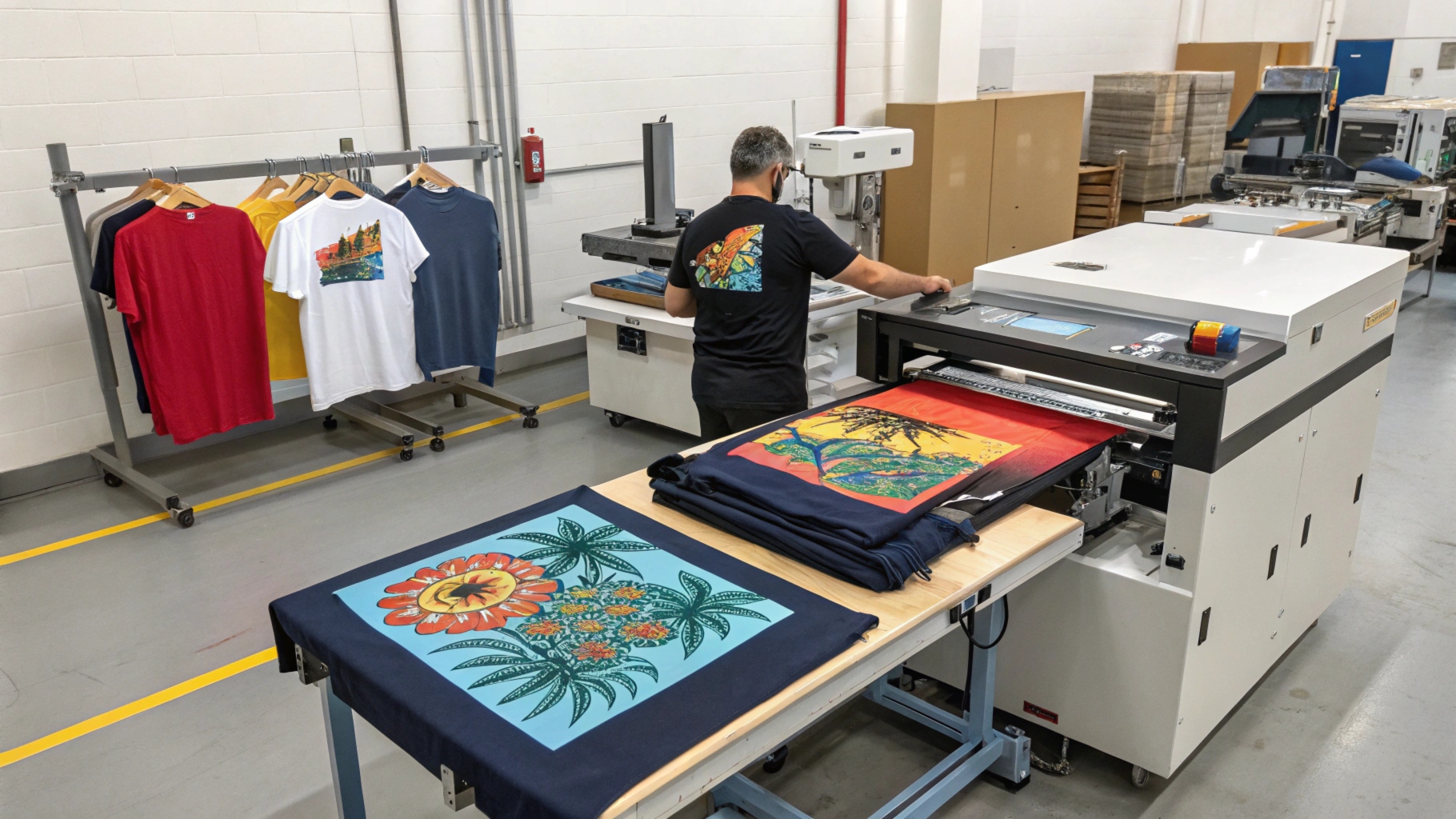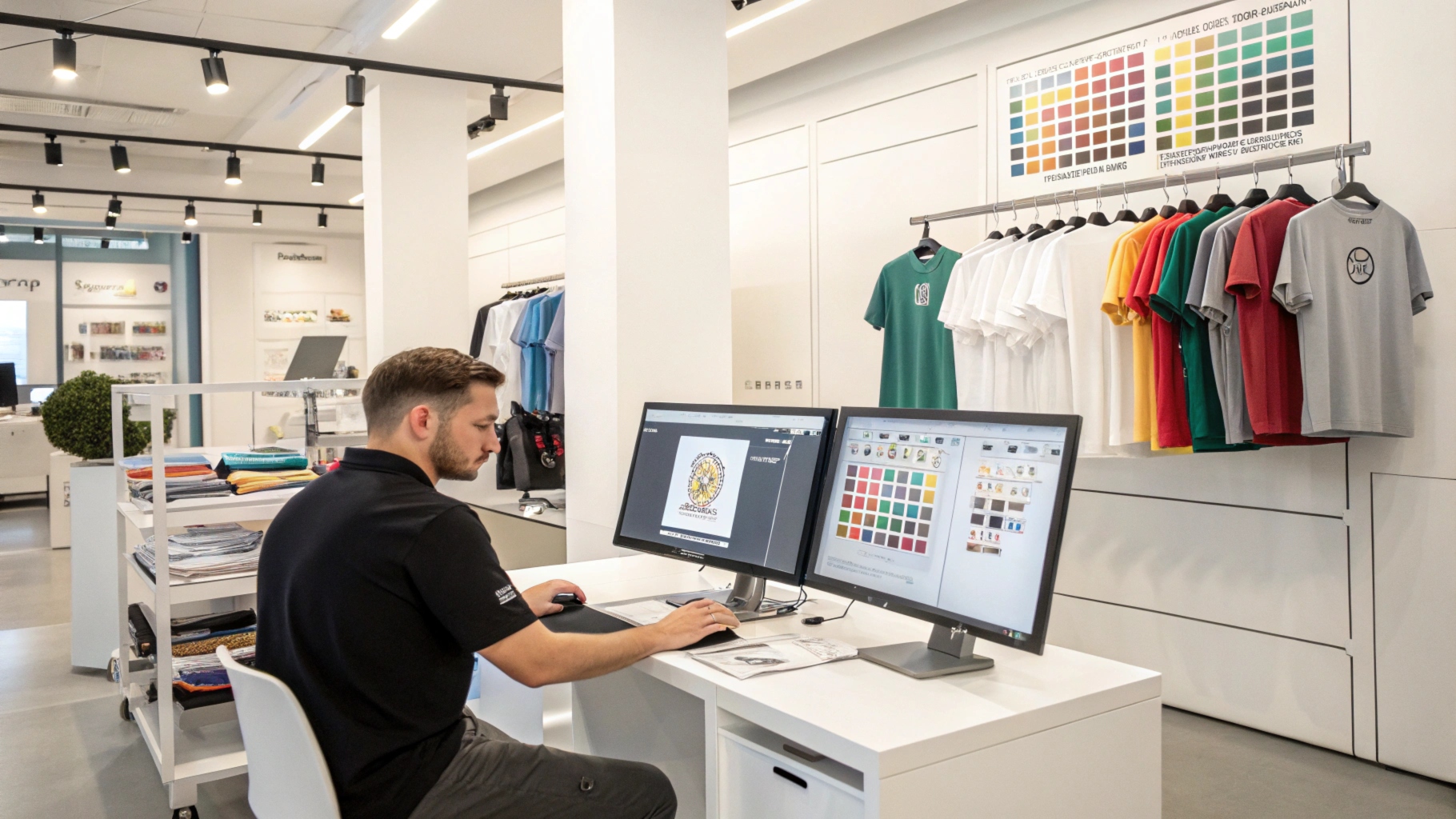Table of contents
What is the first step in designing a T-shirt for merch?
Before jumping into the design process, it's essential to have a solid concept. This will guide your design direction and ensure your T-shirt fits your brand's style. Here’s how to begin:
1. Understand Your Target Audience
Your audience should influence the design. Consider their age, gender, interests, and style preferences.
2. Define the Purpose of the T-shirt
Is the T-shirt for a specific event, general merch, or a unique collection? The purpose helps narrow down your design options.
3. Research Trends and Inspiration
Look at current fashion trends, social media, and the merchandise of similar brands for inspiration. However, make sure your design is unique and stands out.

What are the key design elements for a custom T-shirt?
Now that you have a concept, it’s time to focus on the specific elements of your design. The right mix of elements makes your T-shirt visually appealing and on-brand:
1. Typography
Choosing the right font can communicate your brand's personality. Use bold, legible fonts for clarity and visual impact.
2. Graphics and Illustrations
Consider using illustrations, logos, or unique graphics. High-quality, custom artwork is key to making your merch stand out.
3. Color Scheme
Colors have a powerful psychological effect. Choose colors that align with your brand’s tone while maintaining good contrast for readability.
4. Placement and Composition
The placement of your design on the T-shirt matters. Centered, left-aligned, or pocket-sized placements each convey a different message.
Design Elements Comparison
| Element | Importance | Tip |
|---|---|---|
| Typography | Essential for readability | Choose bold, clear fonts |
| Graphics | Creates visual interest | Ensure high resolution |
| Color | Represents brand identity | Stick to brand colors for consistency |

Which printing methods are best for merch T-shirts?
The quality and durability of your design depend on the printing method used. Here are some popular options:
1. Screen Printing
Screen printing is one of the most common methods for bulk orders. It’s durable and cost-effective but best suited for simple designs.
2. Direct-to-Garment (DTG) Printing
DTG printing allows for highly detailed and colorful designs, perfect for small runs or intricate artwork.
3. Heat Transfer Printing
This method involves transferring the design onto the fabric using heat. It’s ideal for custom, small-batch production.
Printing Methods Comparison
| Method | Best For | Pros | Cons |
|---|---|---|---|
| Screen Printing | Bulk orders | Durable, cost-effective | Not ideal for intricate designs |
| DTG Printing | Small runs, detailed designs | High-quality detail, no setup fees | Slower process, higher cost |
| Heat Transfer | Small batches, custom designs | Quick, flexible | Can peel over time |

How do you work with a manufacturer to produce your custom T-shirt design?
Once you’ve finalized your T-shirt design, it's time to work with a manufacturer. Here’s how you can ensure your design is produced to your standards:
1. Choose a Reliable Manufacturer
Research and choose a reputable manufacturer with experience in custom apparel production. Check their reviews and sample work.
2. Provide a Detailed Design File
Ensure your design is in the correct format (vector files are preferred). Include any necessary specifications regarding colors, placement, and printing method.
3. Request Samples
Before committing to a bulk order, always request a sample. This will allow you to inspect the quality of the fabric, printing, and overall design.
4. Discuss Pricing and MOQ
Understand the pricing structure and minimum order quantity (MOQ) for custom T-shirt production. Compare multiple manufacturers to get the best deal.

Post time: Dec-25-2024







